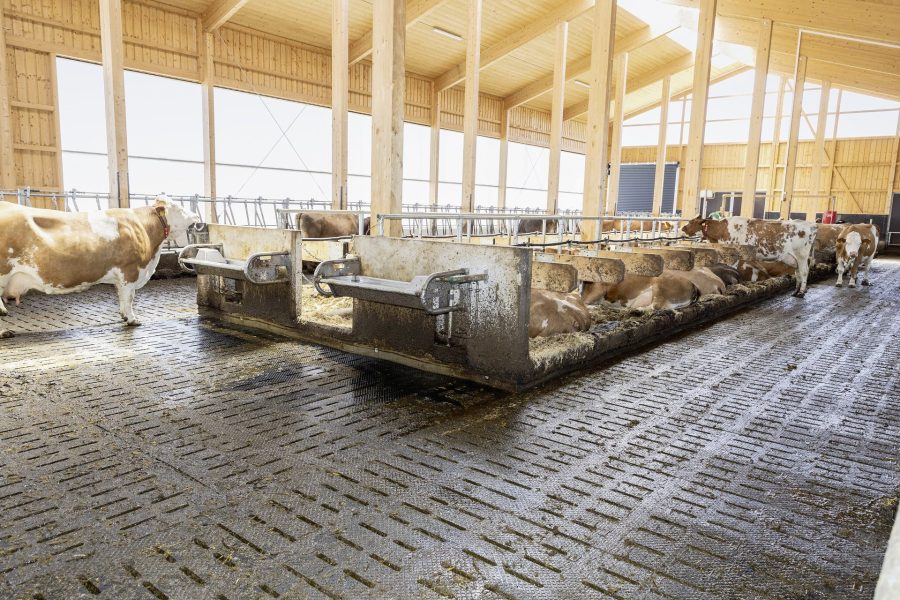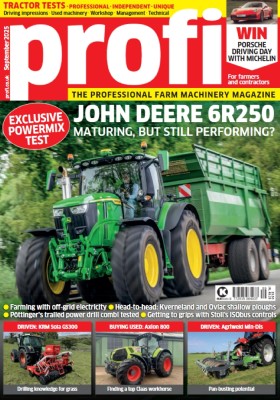The EspaFlex flooring, presented by Kraiburg at EuroTier 2024, reduces the release of ammonia in cattle barns with slatted floors. profi took a close look at the new flooring.
KEEPING IT BRIEF
- Kraiburg’s EspaFlex flooring reduces ammonia emissions in slatted cow sheds.
- An integrated gradient of 3.0% ensures liquid quickly drains into the slurry store.
- The slotted area on the retrofit mats amounts to 12% of the floor area.
Increased amounts of ammonia in the air of a livestock barn not only pose an issue for stock but people, too. Put simply, in high concentrations it’s not going to do you or your animals’ lungs any favours.
Because of this health issue it is one reason why farmers in Germany are being denied planning permission, particularly in areas that fall under the flora and fauna habitat directive.
Scientifically proven
The good new is that it’s possible to reduce ammonia levels without investing in a very expensive air cleaning system — you just need to take preventative steps before the ammonia is formed. The primary reason that ammonia forms is that the animal faeces contain enzymes, which are able to break down the urea in the urine into ammonia. So, if you are able to quickly drain the urine or separate it out from the muck as soon as possible, you will then reduce the amount of ammonia formed.
Indeed, this very topic has been investigated by scientists at the Agroscope dairy cattle emissions test barn in Tänikon, Switzerland. In a building with a level floor, they explored how adding a slope and drainage channels for the urine to flow into would reduce the amount of ammonia formed.
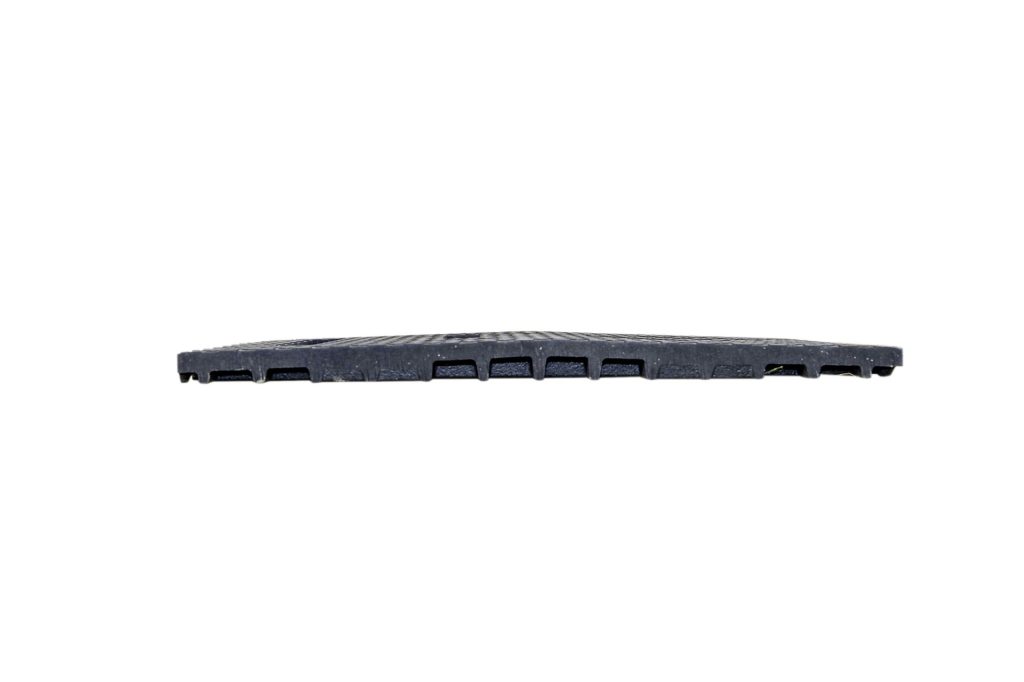
The result: The ammonia level in the barn’s air can be reduced by 20%, provided the passageways have a cross slope of 3.0%. In fact, the results of the research were enough to convince Swiss authorities to give its farmers a £65/animal grant to install a cross slope, which was usually 3.0%.
Slope retrofit — part 1
Kraiburg has already used the results from this research to develop its ProfiKura 3D flooring four years ago — see our report in the 08/2022 issue. These rubber mats are suitable for level alleyways and have the required 3.0% fall by varying the thickness of the rubber. This allows the urine to quickly drain to the channel located in the centre of the passageway. According to a report, which also takes into account the data from Tänikon, the ProfiKura 3D has the potential to reduce ammonia concentration by up to 44%.
Slope retrofit — part 2
The ProfiKura 3D was fine if you had a solid floor, but not if you were on a slat-based system. So, at EuroTier last year Kraiburg introduced its EspaFlex.
Like the ProfiKura 3D flooring, EspaFlex also has an integrated 3.0% slope. This is achieved by varying the thickness of the mats, which are up to 1.25m wide. At their highest point, the mats measure 33mm thick, reducing to 18mm.
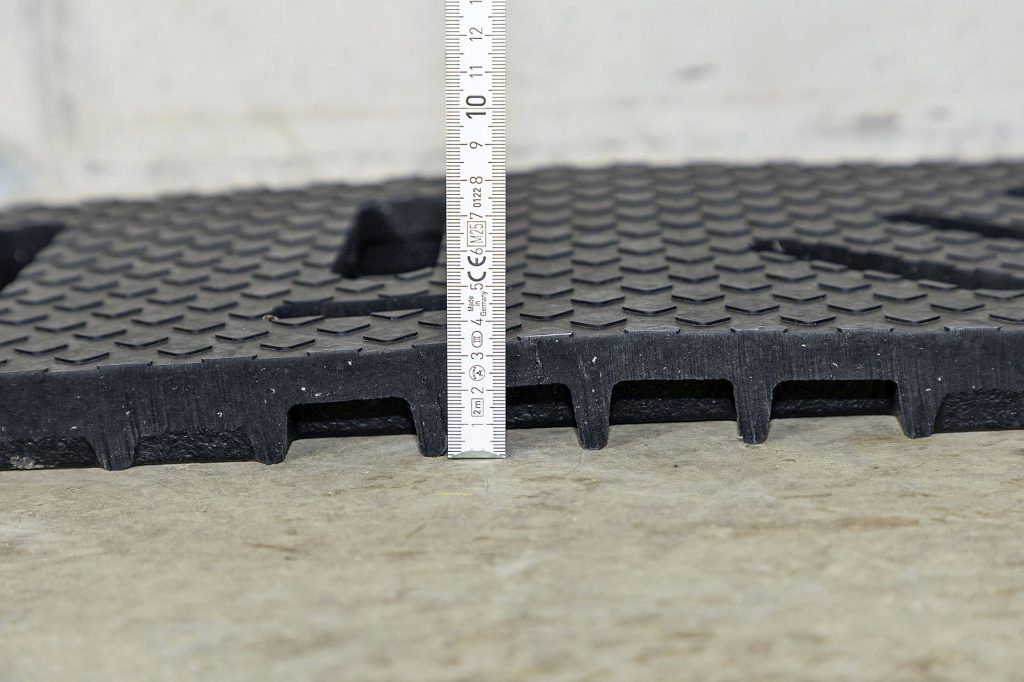
Rather than being configured inline with the passageways, EspaFlex’s drainage channels are perpendicular. When you look down the alleyways it resembles a mini landscape of mountains and valleys with a 15mm variation for the peaks/troughs. This gradient variation is sometimes noticeable when walking along the passageway, but this undulation doesn’t seem to unduly bother the animals.
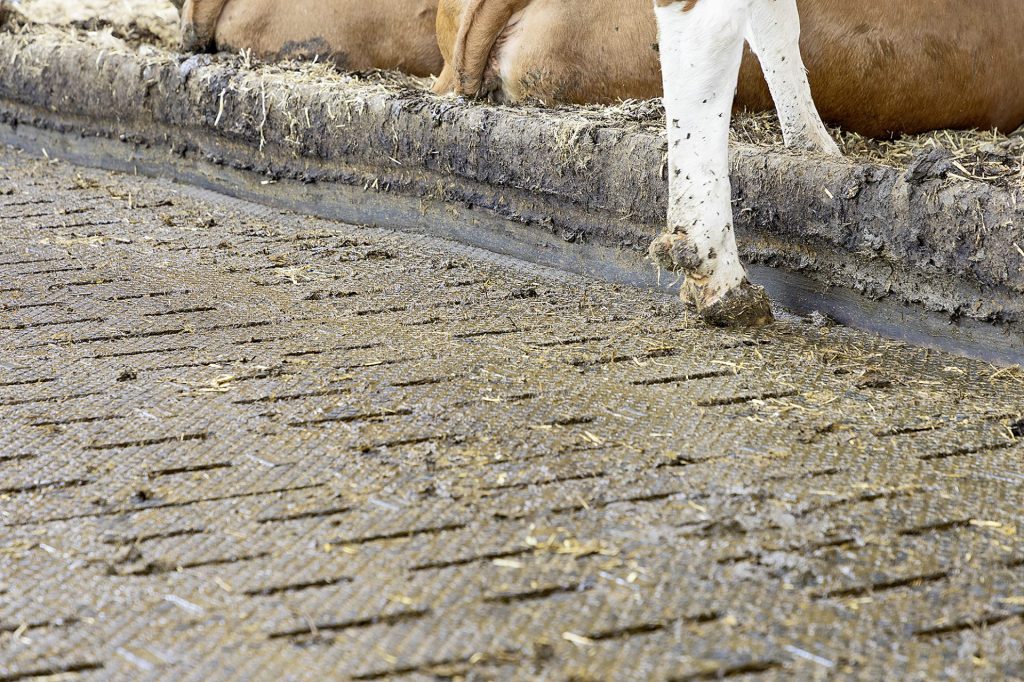
The draining slots are always in the lowest point of the mats, their exact position being dictated by the slatted floor underneath. With the slats measured beforehand, the slits on EspaFlex rubber flooring mats are then cut to size in the factory using water jets.
To create a seamless floor surface, the edges of the mat are cut out like a jigsaw, so they can link to their neighbour. Kraiburg has been using rubber anchors for securing its slat mats for over 20 years and sticks with the same fixing system here. These anchors are simply hammered in once the mats have been laid out in position.
Each single mat can be up 3.50m long and can be continuously connected, so matching the size of the passageway is not an issue.
12% perforation
To ensure that as little as possible of the ammonia formed in the slurry store below can rise into the barn above, the maximum area of the slots is limited to 12%.
By comparison, on conventional slat mats the cut-out slots would be closer to 20% of the area. Theoretically, the 12% slotted area could be further reduced; however Kraiburg cautions of the potential negatives, mainly that of methane becoming trapped in the slurry store leading to a higher risk of fire and explosion.
On the other hand, a perforated area of 12% is considered very low, which is why we also paid particular attention to check how many of the slots were clogged or blocked with straw/sawdust from the bedding. According to Anna and Kelvin Kleinhans, who were among the first farmers to install the new floor mats in their new cow shed, there is no need to worry about clogged slots.
Go-ahead for the new barn
The Kleinhans, based in Allgäu in southern Germany, moved into their new free-stall barn for 80 dairy cows in 2024. Planning permission for the new barn was almost denied due to the proposed site being about 70 metres away from an FFH conservation area. Authorities said they would only grant planning permission if the level of ammonia released was limited to less than 0.1g/h by installing an emission-reducing floor.
The first possible solution was to install a level floor with a scraper, but due to the sometime harsh winters in Bavaria this was quickly discounted. A milking robot in the middle of the barn would also have added to the cost and complexity of using a scraper, and the connecting cross ways would still need to be manually scraped.
The long search
In their search for a solution, the couple came across the innovative idea of using mats on slatted floors that were claimed to minimise emissions. A calculation by the KTBL (the German Agricultural Association for Technology and Construction) showed that fewer slots in the floor area can reduce ammonia emissions by up to 38%. This was enough to obtain planning permission.
However, while visiting various farms with mat-covered slats, the Kleinhans discovered that some were not working as well as they should. Indeed, in some instances, farmers had removed the mats (and in doing so were violating regulations) to overcome the issues of slurry clogging the slots.
Not deterred, they continued their search and talked to Kraiburg. Although the firm hadn’t yet officially introduced the all-new EspaFlex floor, and there were no inhouse measurements or first-hand experience, the authorities granted permission to install the mats. According to the two farmers, the installation of the precisely cut mats was straightforward.
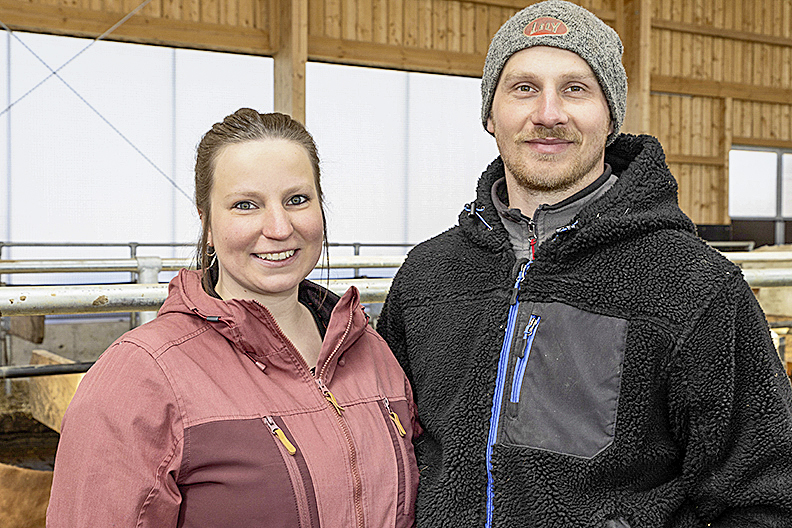
All of the Kleinhans’s slatted floor is covered with EspaFlex mats and regularly cleaned by a Lely scraper robot unit. The forward-thinking couple couldn’t go with the vacuum slurry collecting robot, as this system is not yet approved for use with the mats.
Everyday functionality
In everyday use, the scraper robot copes well with the new floor, even though it is not flat and there are seams and joints.
There is no issue with puddles, either, as the urine and water from the drinking troughs quickly drains away. Even though the farm uses chopped straw for bedding its cubicles (which is applied by running a spreader on the rubber floor) they have not struggled with blockages or similar issues.
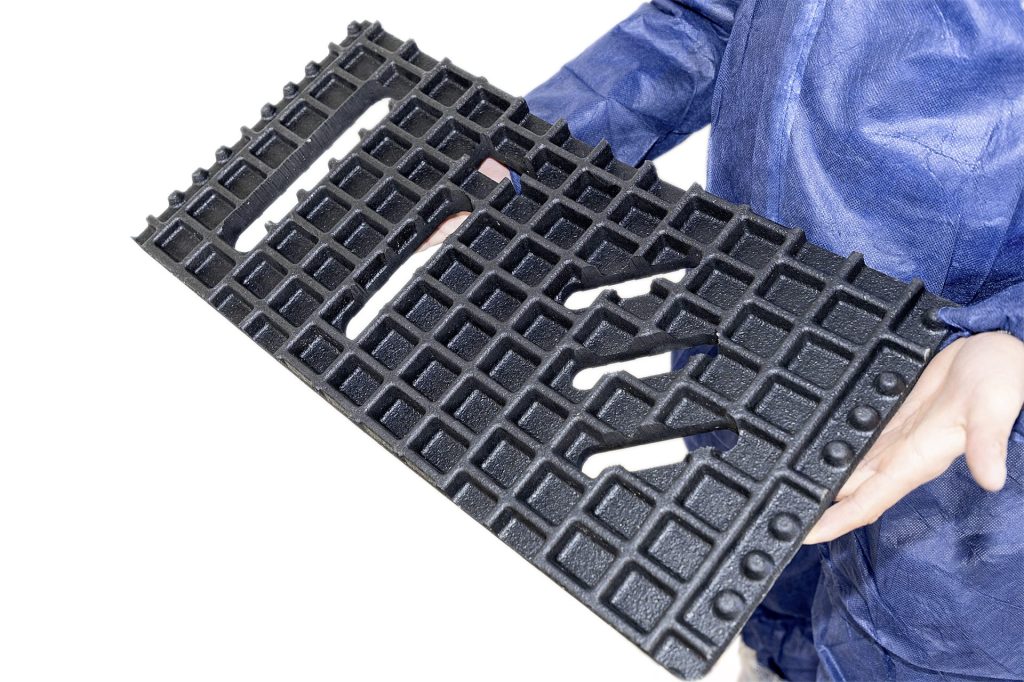
The cows appear to enjoy the soft yet grippy floor, evident in their long confident strides and animals in heat mounting others.
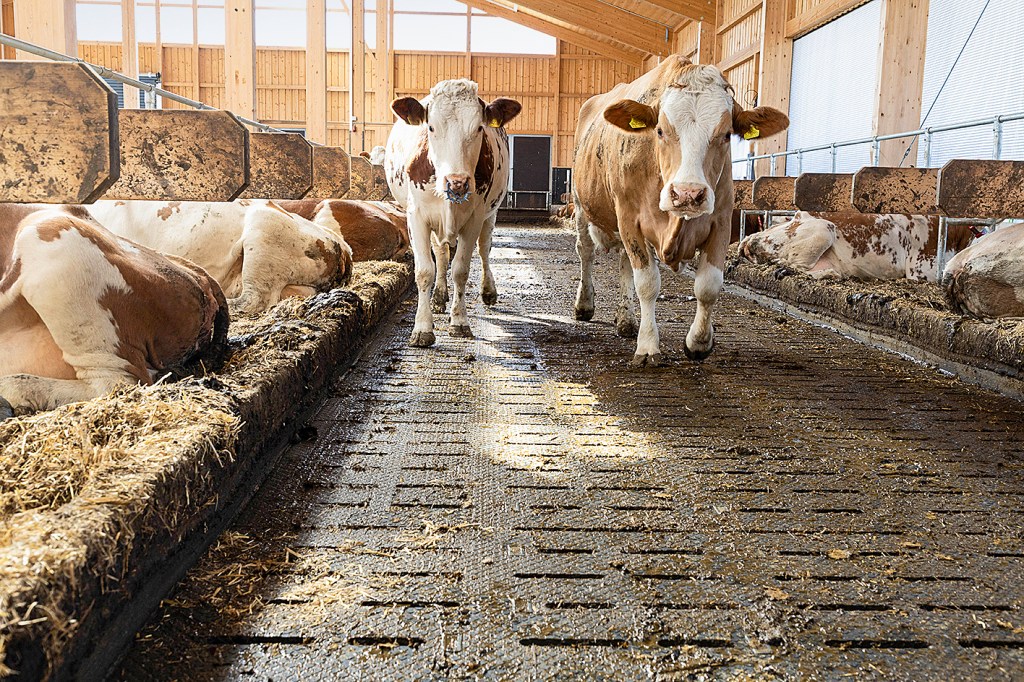
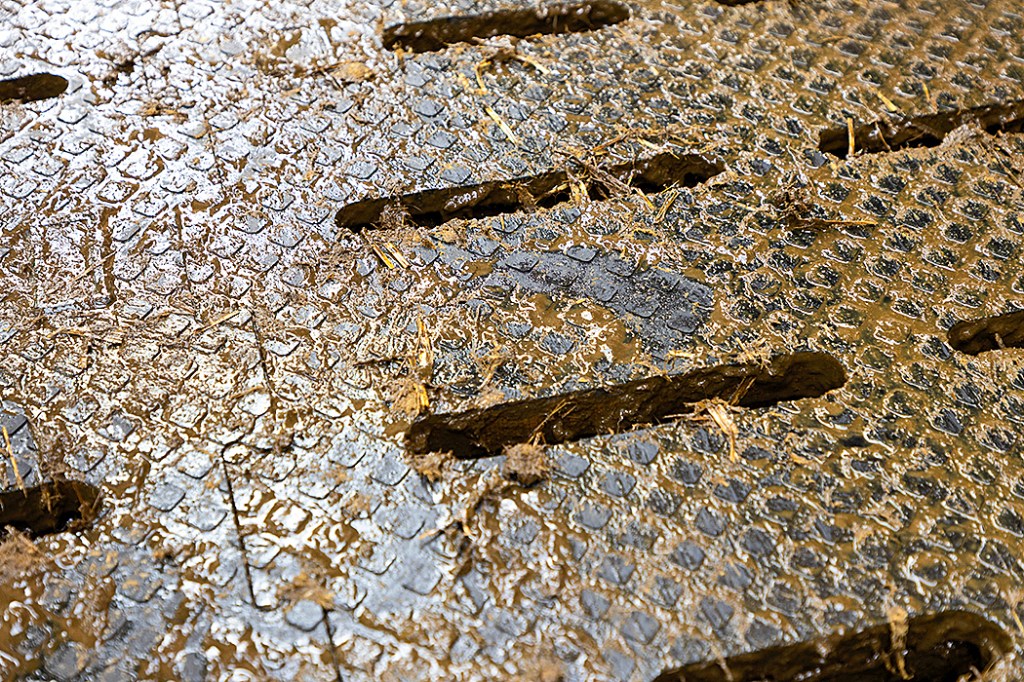
Anna Kleinhans is also pleased to note that cows with hoof issues walk much better on the ‘elastic’ floor than in the old barn. “The difference to concrete and traditional slatted floors was immediately noticeable,” adds Kevin while speaking to us.
During our visit, we barely noticed ammonia in the barn air, which feels good to breath. Anna confirmed our impression. In fact, she herself is now convinced the new emission reducing floor is beneficial not solely to the environment but also to her own health and that of her animals.
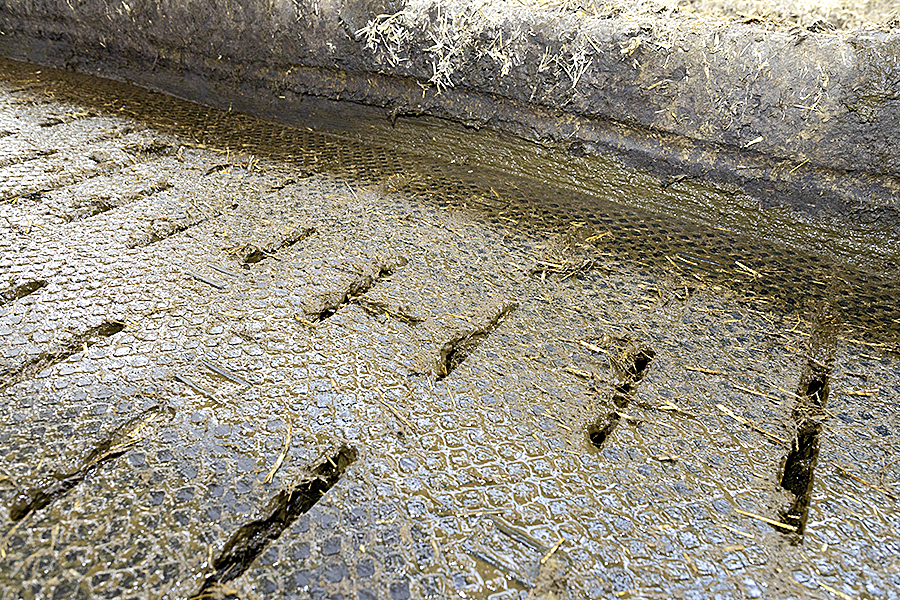
About the costs
Kraiburg quotes around €118/m2 for the new rubber flooring. This includes the costs for measuring the barn and customising the mats, the fixing material and a five-year guarantee from the manufacturer. The mats can be self-fitted by the farmer.
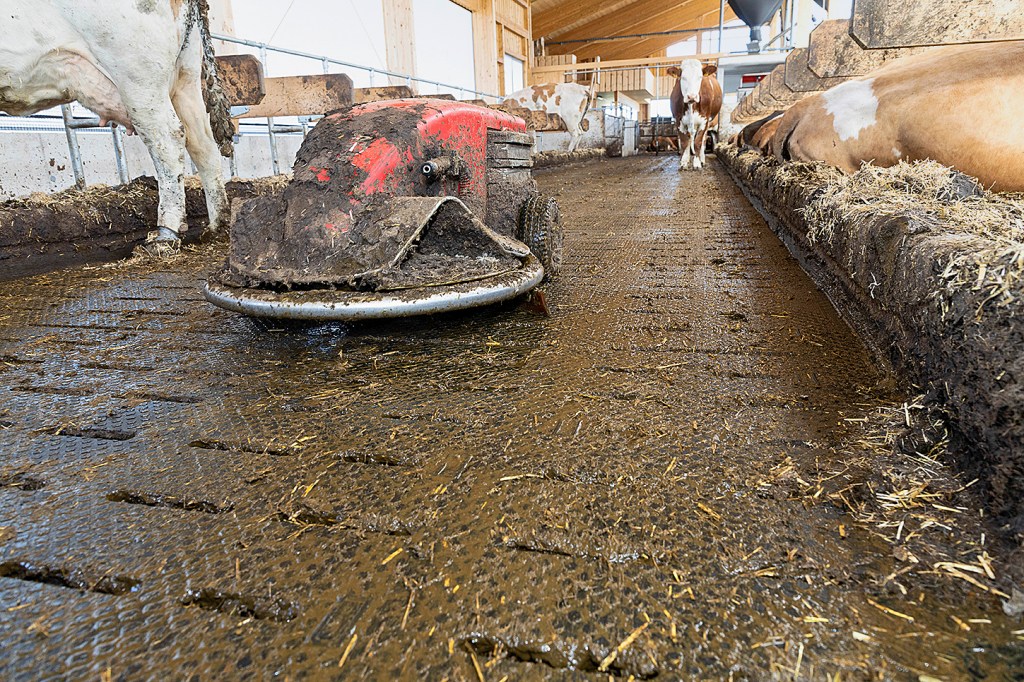
Summary
EspaFlex from Kraiburg provides farmers with an emission-reducing rubber floor for cow sheds with slats. Although Kraiburg has not yet been able to present its own data measurements for its retrofittable flooring, it has approval from authorities in Germany thanks to appropriate scientific data. This is good news for owners of old and new cattle barns with slatted floors — especially as the softness of the flooring is also good for the animals and their hooves.
But the best news of all is that unlike many existing mats, this new design seems to work well in everyday operation — even in straw-bedded cubicles.
Martin Zäh
For more up-to-date farming news click here and subscribe now to profi and save.

